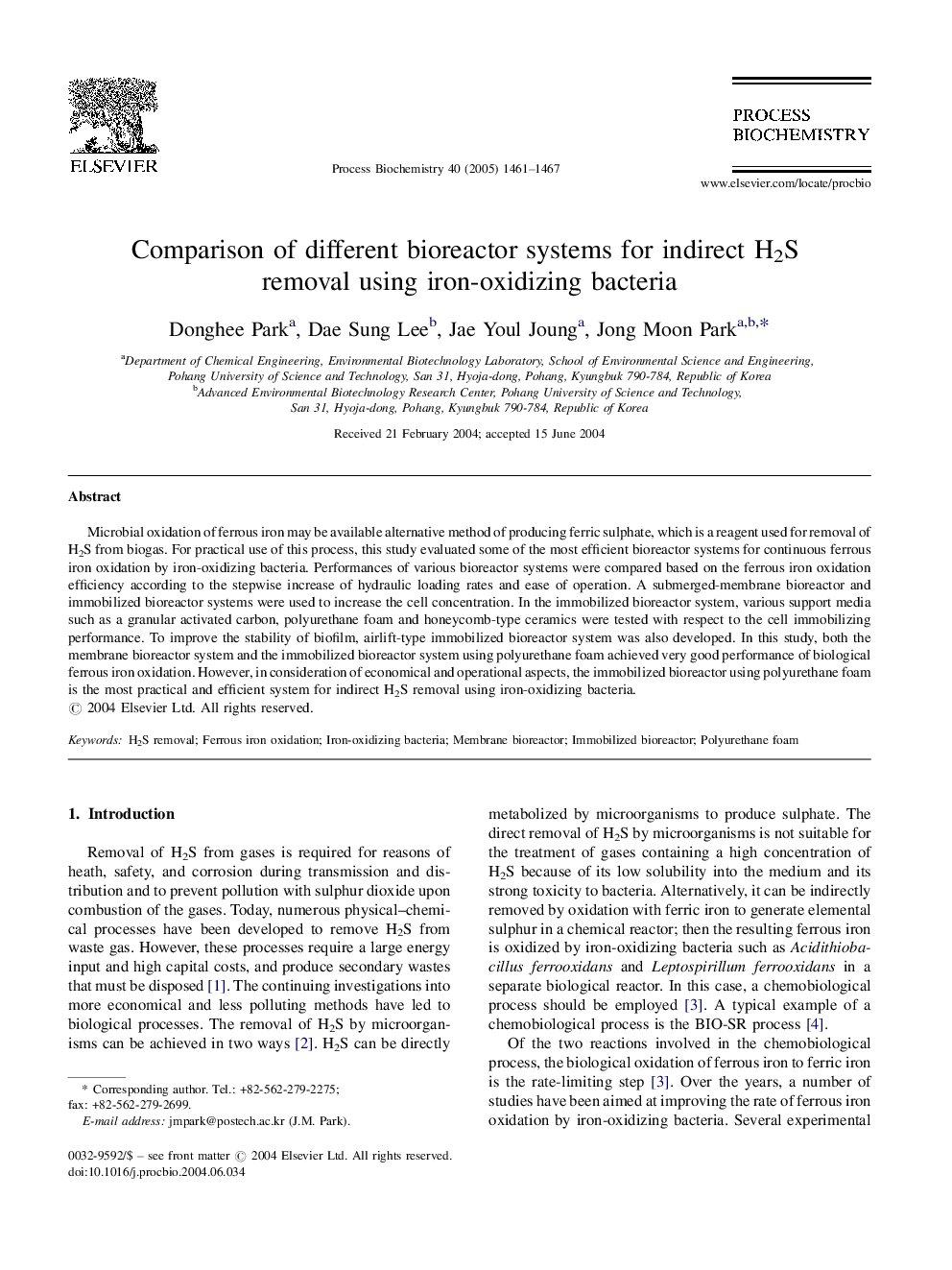| Article ID | Journal | Published Year | Pages | File Type |
|---|---|---|---|---|
| 9607719 | Process Biochemistry | 2005 | 7 Pages |
Abstract
Microbial oxidation of ferrous iron may be available alternative method of producing ferric sulphate, which is a reagent used for removal of H2S from biogas. For practical use of this process, this study evaluated some of the most efficient bioreactor systems for continuous ferrous iron oxidation by iron-oxidizing bacteria. Performances of various bioreactor systems were compared based on the ferrous iron oxidation efficiency according to the stepwise increase of hydraulic loading rates and ease of operation. A submerged-membrane bioreactor and immobilized bioreactor systems were used to increase the cell concentration. In the immobilized bioreactor system, various support media such as a granular activated carbon, polyurethane foam and honeycomb-type ceramics were tested with respect to the cell immobilizing performance. To improve the stability of biofilm, airlift-type immobilized bioreactor system was also developed. In this study, both the membrane bioreactor system and the immobilized bioreactor system using polyurethane foam achieved very good performance of biological ferrous iron oxidation. However, in consideration of economical and operational aspects, the immobilized bioreactor using polyurethane foam is the most practical and efficient system for indirect H2S removal using iron-oxidizing bacteria.
Keywords
Related Topics
Physical Sciences and Engineering
Chemical Engineering
Bioengineering
Authors
Donghee Park, Dae Sung Lee, Jae Youl Joung, Jong Moon Park,
